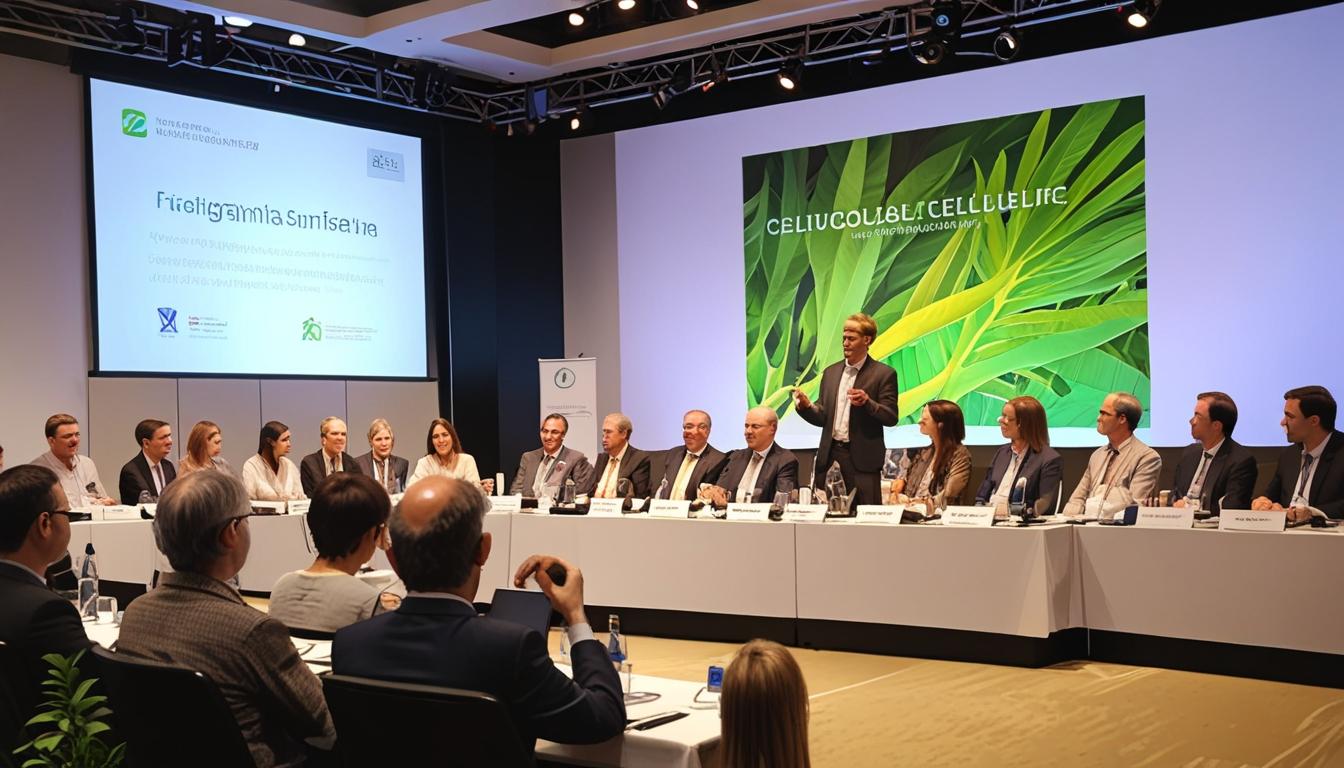The Cellulose Fibres Conference 2025 brought together industry leaders to explore advancements in sustainable cellulose fibre production and innovation, with a focus on biosynthetics and future market dynamics.
The Cellulose Fibres Conference 2025 (CFC 2025) took place on March 12-13 in Cologne, Germany, bringing together approximately 200 industry leaders, innovators, and researchers from 22 countries. The event reinforced its reputation as a leading international platform dedicated to the emerging cellulose fibre industry, focusing on advancements in cellulose fibres that are relevant for textiles, hygiene products, and packaging.
One of the central themes of the conference was the exploration of sustainable fibre innovations. Participants examined developments in cellulose fibre production, which is predominantly sourced from wood-based chemical pulp. Additionally, the conference introduced new potential raw materials such as agricultural waste, paper-grade pulp, and recycled textiles, signaling a potential transformation in market dynamics.
In a notable departure for this year’s event, there was a prominent focus on biosynthetics. Experts evaluated the scalability, biodegradability, and overall performance of these materials in comparison to traditional fossil-based synthetic fibres, marking a pivotal moment for sustainable alternatives in the textile industry.
The conference encouraged dynamic engagement and lively discussions on various pivotal topics, including strategies for circular economies, fibre-to-fibre recycling, the implications of marine biodegradability versus the formation of fibre microplastics, and innovative technologies relating to pulp, fibres, biosynthetics, and yarns.
Rahul Bansal, Vice President & Head of the Global Nonwoven Business at Birla Cellulose (India), expressed the significance of the event, stating, “The Cellulose Fibres Conference provides a unique platform for the entire cellulose fibre value chain. As the world shifts towards plastic-free products, cellulose-based fibres are witnessing increased investment in innovation and process development for enhanced sustainability.”
Market trends discussed during the conference highlighted strong investment in the cellulose fibre sector, with projections indicating an introduction of 200,000 tonnes of additional capacity annually on a global scale. According to Andreas Engelhardt from The Fiber Year (Switzerland), growth is promising, with Marina Crnoja-Cosic from Textile ETP (Belgium) forecasting a 17% annual capacity increase for cellulose fibres from 2024 to 2029, particularly with investments centering around Lyocell production. This shift is increasingly relevant as noted by Simone Seisl from CR Consultant (Germany), who reported that Lyocell is gradually supplanting traditional viscose and cotton, especially as cotton production faces challenges tied to climate change.
To aid in industry development, Dieter Eichinger from CIRFS (Belgium) proposed a new standard for classifying cellulose fibres, which would categorize products like Viscose, Lyocell, Tencel, Modal, Cupra, and other innovations under the umbrella term “cellulose fibres.” This proposal garnered substantial support, with Anna Palmberg of IKEA (Sweden) indicating interest in enhancing the use of cellulose fibres in the retailer’s product lines.
A highlight of the conference was the ‘Cellulose Fibre Innovation of the Year 2025’ awards, sponsored by GIG Karasek. For the first time, these awards recognized advancements in biosynthetics. The three winners included:
-
SA-Dynamics (Germany) for its development of Cellulose Aerogel Textiles, which are 100% biodegradable and offer superior thermal insulation for both textiles and construction applications.
-
Releaf Paper France (France), honored for its innovative low-temperature extraction process that transforms urban fallen leaves into high-quality cellulose fibres, providing a sustainable alternative to hardwood pulp.
-
Uluu (Australia), in collaboration with Deakin University, recognized for producing biodegradable textile fibres derived from farmed seaweed, providing an alternative to plastic-based polyester and addressing the issue of microplastic pollution.
The conference also included various networking opportunities, facilitated by a matchmaking tool that helped establish over 50 business meetings. Further fostering connections, an informal German bowling evening allowed attendees to strengthen their professional relationships in a lively atmosphere.
CFC 2025 was supported by several sponsors, including GIG Karasek, Birla Purocel, List Technology AG, Valmet, and DIENES. Wolfgang Aichhorn, Head of Sales & Marketing at GIG Karasek, commented on the event’s commitment to innovation: “Each year, the Cellulose Fibres Conference showcases groundbreaking advancements, reaffirming the immense potential of sustainable fibres.”
The success of CFC 2025 underscores a collective commitment within the industry towards fostering a sustainable, bio-based future in textiles. As the market for cellulose fibres and biosynthetics continues to expand, it is anticipated that the conference will remain a crucial hub for innovation, collaboration, and knowledge exchange going forward. Details regarding the upcoming CFC 2026 are expected in the future.
Source: Noah Wire Services



